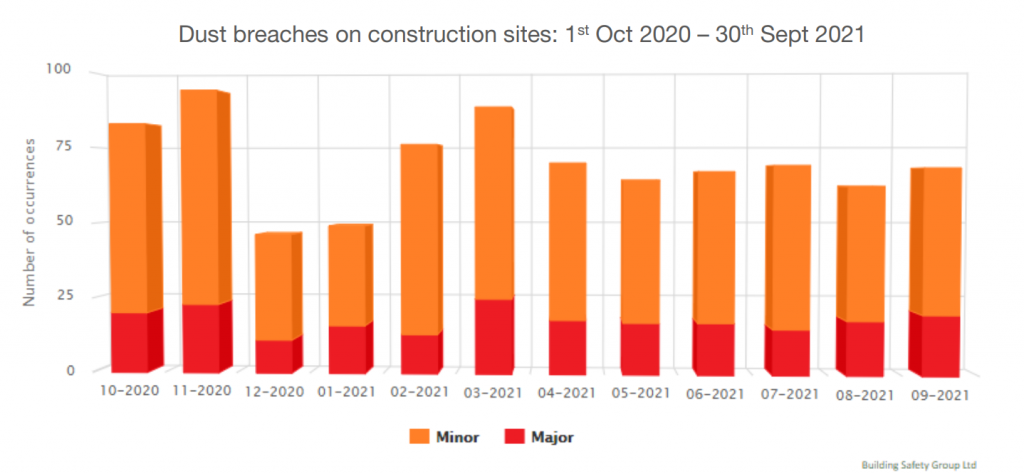13 October 2021
Dust is the biggest health hazard on construction sites
Breaches in dust control are the biggest health hazard on construction sites, according to new statistics published by the Building Safety Group (BSG).
Data analysis concluded that dust breaches made up 41% of ‘Occupational Health’ infringements recorded on building sites following 16,000 inspections, conducted over the last twelve months. The second highest breach logged was PPE (25%) followed by COSHH (13%), Vibration (7%) and Noise (7%).
BSG’s latest figures have been circulated during an ongoing HSE blitz which began at the start of October. This year’s HSE inspections will focus on respiratory risks and occupational lung disease, looking at the control measures businesses have in place to protect their workers’ lungs from construction dust, including silica, asbestos, and wood dust.
More than 3500 builders die each year from cancer related to their work, with thousands more cases of ill health and working days lost. HSE’s chief inspector of construction, Sarah Jardine, said: “Around 100 times as many workers die from diseases caused or made worse by their work than are actually killed in construction accidents.” Sarah added: “There are a few simple things that everyone can do to make sure they are protecting their health and their future. Be aware of the risks associated with activities you do every day, recognise the dangers of hazardous dust, and consider how it can affect your health. We want businesses and their workers to think of the job from start to finish and avoid creating dust by working in different ways to keep dust down and wear the right protective equipment.”
BSG’s Technical Support Manager, Andy Harper also commented: “Dust particles can be 100 times smaller than a grain of sand. You don’t need to see them to breathe them in. Once in your lungs, dust will start causing damage. Exposure to dust can lead to severe breathing difficulties and lung diseases that can ruin lives and cause an early death. Construction workers have a high risk of developing these diseases because many common construction tasks
can create high dust levels. It can take years before the damage is visible and by then it can be too late.”
Andy continued: “Construction dust is regulated most effectively when there are control methods and processes in place to minimize how much dust is generated during operations. Some sites also require extraction, suppression, and ventilation procedures to keep dust at safe levels. Dust prevention measures have been widely
published in industry guidance and should be considered for all jobs which are potentially harmful.”
For more information about working with dust how to limit risk exposure, please call Andy Harper 07824 492781 or email: andrewh@bsgltd.co.uk. You can also view our Toolbox Talk video about silica dust on our YouTube channel.
